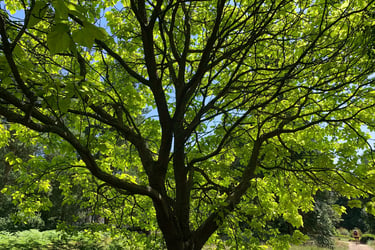Easy ways to bring the benefits of nature into the classroom
How the rules of Biophilic design can transform learning spaces
Jocelyn Mayo
8/27/20252 min read


Easy Ways to Bring the Benefits of Biophilic Design into the Classroom
The growing field of biophilic design—bringing elements of nature into built environments—is showing real promise in promoting both mental wellbeing and learning for children and young people. Classrooms designed with nature in mind can reduce stress, improve attention, and support positive behaviour.
Key Principles of Biophilic Design for Learning
1. Visual connection to nature – seeing plants, trees, natural imagery, or murals.
2. Incorporating plants and greenery – living plants or green walls.
3. Natural materials and textures – wood, stone, cork, or textiles with organic patterns.
4. Natural light and views – daylight and views of the outdoors.
5. Outdoor or nature-adjacent learning spaces – lessons, breaks, or reading outside.
6. Calming natural sounds – bird song, water sounds, or gentle background audio.
7. Scent and air quality – fresh air, herbs, or subtle natural scents.
Practical Ways to Bring Nature into the Classroom
1. Place potted plants on windowsills, shelves, or in clusters.
2. Rearrange seating to maximize views of greenery.
3. Introduce large murals or images of natural landscapes on walls or partitions to create immersive visual connections.
4. Install a small living wall or vertical plant display.
5. Open blinds and maximize natural light wherever possible.
6. Run short lessons or breaks outdoors in a garden, playground, or courtyard.
7. Use natural materials and textures—wooden or cork furniture, rugs, cushions, or a large piece of stone or wood as a focal element or learning tool.
8. Incorporate subtle natural sounds or scents—birdsong, water sounds, or herbs near a reading corner.
9. Create cosy “nature corners” with plants, natural textures, and soft seating to provide refuge and calm for students.
Further Reading
• Li & Sullivan (2016). Impact of views to school landscapes on recovery from stress and mental fatigue. High school students with views of greenery recovered from stress more quickly. Frontiers in Psychology
• Kuo et al. (2018). Do lessons in nature boost subsequent classroom engagement? Outdoor lessons increased on-task behaviour and reduced disruptions. Frontiers in Psychology
• van den Berg et al. (2017). Green walls in elementary schools. Adding living walls improved selective attention and classroom perceptions. Building and Environment
• Han (2009). Influence of plants in classrooms on students’ well-being and behaviour. Classrooms with plants saw reduced sick leave and misbehaviour. HortScience
• Engemann et al. (2019). Residential green space in childhood and mental health outcomes. Danish nationwide study linking greener childhoods to lower risk of mental disorders later in life. PNAS


